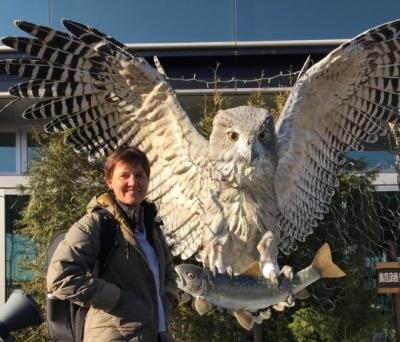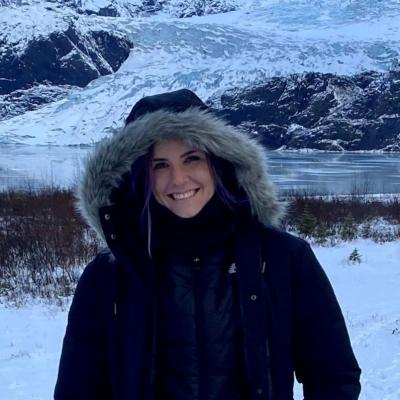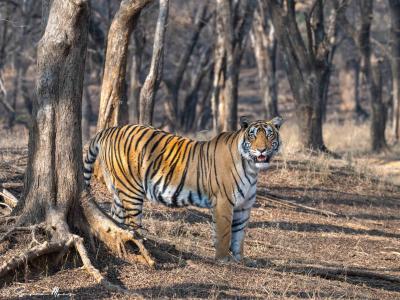2024 Narrative
IN BRIEF: Once again, the Vietnam tour surpassed all expectations – from the mesmerizing variety of birds and other wildlife to breathtaking landscapes and unforgettable cultural encounters. Beginning our journey in the vibrant capital of Hanoi and culminating in the bustling streets of Saigon in the south, each step revealed diverse birdlife, ecosystems, and picturesque vistas.
Cuc Phuong National Park
Departing from Hanoi, our journey unfolded southward along the iconic National Route 1, a legendary highway spanning the entirety of Vietnam, stretching 2301 kilometres from the Chinese border to the southernmost tip of the country. We weren’t quite ready to travel that far just yet, so a relatively brief two-and-a-half-hour drive brought us to the national park just in time for lunch. Over the next two days, we explored the park, traversing it from end to end as we birded at various points on the scenic drive from the park headquarters to the Bong Substation, situated at the terminus of the sole road that cuts through the park’s picturesque landscape.
Despite persistent inclement weather – characterized by chilling cold and relentless rain – our determination prevailed, leading to several remarkable bird sightings during our sojourn in Vietnam’s premier national park. Established in 1960 under the watchful guidance of then-President Ho Chi Minh, this expansive sanctuary encompasses a landscape of limestone karst mountains and verdant valleys, harboring an impressive diversity of plant and animal species. Despite the weather’s persistence, an extended stay at a strategically positioned hide proved fortuitous, affording us sightings of several elusive birds such as the Rufous-tailed Robin, Fujian Niltava, Rufous-throated Fulvetta, as well as the Japanese and Black-throated Thrushes – species that might have otherwise eluded us. Roadside birding, though at times slow, yielded fruitful results, punctuated by noteworthy encounters with elusive species such as the Annam Limestone Babblers, Red-headed Trogon, Orange-headed Thrush, and Greater Flameback. Closer to the headquarters, our exploration rewarded us with more sightings, including Rufous Prinia, White-bellied Erpornis, Pin-striped Tit-Babblers, and an assortment of bulbuls.
Van Long Wetland Nature Reserve
One afternoon, we ventured to the Van Long Nature Reserve, located about an hour away from the park. Here, we embarked on a fleet of small boats expertly guided by local navigators, meandering through the labyrinthine waterways flanked by dense reedbeds, and karsts rising dramatically from the wetlands. One couldn’t ask for a more peaceful and picturesque birding experience as we marvelled at large congregations of unlikely looking Asian Openbills, interspersed with welcome sightings of Black, Yellow and Cinnamon Bitterns. Bubbling Blue-tailed Bee-eaters cavorted overhead as we spotted lumbering Greater Coucals, charming Amur Stonechats, and a diversity of prinias.
Phong Nha National Park
Formally known at Phong Nha-Ké Bàng, this exceptionally beautiful reserve was the next stop on our birding journey. Situated approximately 500 kilometers south of Hanoi, we arrived in the late afternoon following a lengthy journey. Beyond its breathtaking scenery, this national park was established not only to safeguard its remarkable biodiversity but also because it boasts the world’s largest karst system, harboring over 300 caves. This includes the illustrious trio of the planet’s largest caves, notably the awe-inspiring S?n ?oòng Cave, whose existence was discovered only in 2009.
Our primary objective here was to encounter the elusive Sooty Babbler, a species rediscovered in 1994 after having been previously known only from specimens collected in Laos in 1920. Thankfully, our quest proved fruitful, and in our pursuit, we crossed paths with several other captivating avian species, including the Brown-rumped (Swinhoe’s) Minivet, the striking Long-tailed Broadbill, Racket-tailed Treepie, Sultan Tit, and Streaked Spiderhunter.
An afternoon voyage by boat along the S?n River towards the UNESCO World Heritage Site of Phong Nha Cave, is an enthralling adventure. The tranquil journey unfolds against a backdrop of verdant foliage and snippets of local life dotting the riverbanks. As the boat ventures closer to the mouth of Phong Nha Cave, the imposing limestone cliffs adorned with intricate stalactites and stalagmites lure explorers into its mysterious depths. Stepping onto the cave’s shores, enveloped by its cool, damp ambiance, one is immediately struck by the overwhelming beauty and profound historical significance of this majestic subterranean marvel.
Stationing ourselves on a bridge overlooking the dramatic landscape, we were delighted to spot Rufous-bellied Eagle, Square-tailed Drongo-Cuckoo, Red-vented Barbet, and Spot-necked Babbler. A brief detour directed by Trong took us to a spot where a brief blast of a Short-tailed Scimitar-Babbler call yielded an immediate and dramatic response. Our return to the bridge the following morning proved equally rewarding, with sightings of Green-eared Barbet, Indochinese Yuhina and three species of laughingthrush - White-crested, Black-throated and Lesser Necklaced - standing out as particular highlights.
Deo Sa Mu
Continuing our journey southward, our next destination was Khe Sanh, a modest town nestled right in the heart of Vietnam, forever etched in history as the site of one of the most intense battles of the Vietnam War, referred to in Vietnam as the American War. Visiting this town today, devoid of historical context, one would hardly fathom the tragic events that once unfolded here.
Our brief stay was marked by a fleeting visit to the excellent birding site known as Sa Mu Pass. We were treated to wonderful sightings of Crested Goshawks, Necklaced and Moustached Barbets, Lesser Racket-tailed Drongos, along with an array of bulbuls and babblers, and the charming Verditer Flycatcher. These sightings beautifully complemented our eagerly anticipated, albeit challenging, quest to catch a glimpse of the elusive Rufous-cheeked Laughingthrushes!
Ngoc Linh
Our journey then led us to the tiny and remote village of Tu Mo Rong, serving as our hub for exploring nearby Ngoc Linh, aptly named Jade Mountain in English. Embarking on an adventurous hike deep into the forest, we arrived at a well-prepared blind where we waited patiently, albeit unsuccessfully, for our elusive target. Nonetheless, our efforts were richly rewarded with sightings of some highly sought-after birds – including the Grey-bellied Tesia, Golden Babbler, Brown-crowned Scimitar-Babbler, Rufous-winged, Rusty-capped, and Indochinese Fulvetta, along with the Black-crowned Barwing. These sightings ensured that our endeavours were far from futile.
M?ng ?en
This newly established town, built in 2003 and situated at 1200 meters on the M?ng ?en Plateau, was envisioned to draw in throngs of tourists enticed by its refreshing climate and picturesque surroundings. However, despite these expectations, the town has yet to experience the influx of visitors. Nevertheless, since its inception, it has become a magnet for birding enthusiasts drawn by the promise of encountering some truly remarkable avian species.
From the comfort of our well-appointed hotel base, we embarked on numerous excursions into the nearby forest. Along roadsides and trails, we sought out birds such as the Indochinese Barbet, Stripe-breasted Woodpecker, Clicking Shrike-Babbler, Yellow-cheeked Tit, Pale Blue-Flycatcher, and Mrs. Gould’s Sunbird. On one occasion, a cute Collared Owlet allowed us extended views, its familiar call echoing through the forest as it revealed the captivating eyespots on the back of its head.
Although our attempts to catch a glimpse of the infuriating Blyth’s Paradise Flycatcher were less fruitful, we were treated to some excellent sightings of smaller avian delights such as the Rufous-faced Warbler, Black-throated Tit, Black-chinned Yuhina, and Fire-breasted Flowerpecker. The elusive Grey-headed Parrotbill posed a greater challenge, briefly revealing themselves to only a fortunate few among our group of birders.
Yok Don National Park
Our next destination provided a complete change of pace! Yok Don sits right on the border with Cambodia, contiguous with the Cambodian Mondulkiri Protected Forest. Unlike the forests we had previously explored, the landscape here offers a distinct contrast, characterized by a mosaic of deciduous and mixed deciduous forests. This unique habitat gives rise to a diverse avifauna, setting it apart from the other locations we had visited.
Exploring Yok Don was an exciting adventure, as we encountered a whole new array of bird species. Although our accommodations in the national park were rustic, being nestled right in the heart of the action added to the experience. Our birdwatching targets were plentiful, and we achieved remarkable success!
During our initial exploration, we were swiftly greeted by the sight of Indochinese Roller, Eurasian Hoopoe, Lineated Barbet, Black-hooded Oriole, Velvet-fronted Nuthatche, Purple Sunbird, and Golden-fronted Leafbird. We were thrilled when our sought-after targets, the Black-headed Woodpecker and Burmese Nuthatch, cooperated beautifully.
Further expeditions rewarded us with sightings of Common Woodshrike, White-crested Laughingthrush, Rufous Treepie, Crested Treeswift, Asian Barred Owlet, and more. The surprise appearance of a pair of Black Bazas was an unexpected delight, too!
?à L?t
Our penultimate destination, Da Lat, proved to be one of our favourites. This large and bustling, yet delightful city, is located on the Langbian or ?à L?t Plateau in Vietnam’s southeast. The plateau’s isolation has fostered the evolution of a distinctive fauna, including numerous endemic species and subspecies.
We birded several excellent sites and blinds during our three nights stay here, including the Bi Dup National Park (an Important Bird Area as designated by Birdlife International), Ta Nung Valley, and Cong Troi (another IBA). Though our targets were plentiful, they required diligent effort to locate.
We began our efforts at Bi Dup where we found Black-hooded and White-cheeked Laughingthrushes, as well as our first stunning Indochinese Magpies. White-tailed Robins were cooperative, as were Black-browed Fulvetta, Large Niltava and Black-headed Sibia. We were thrilled to find a group of exceptionally cooperative Black-headed Parrotbills, in company with Mountain Tailorbird and Long-tailed Broadbill. To our delight, the hoped-for Yellow-billed Nuthatch also made a welcome appearance.
Our next stop was Ta Nung Valley, and if anyone ever asks about the most peculiar place I’ve ever birded, this is certainly the answer! What was once a tranquil patch of forest has now been transformed into the “Hoa Son Dien Trang Ecotourism Destination,” which is a rather exaggerated use of the term “ecotourism.” This selfie paradise is undeniably bizarre, yet amidst the chaos, the birds persist, which is quite remarkable!
Despite the unconventional setting, our birding experience here was surprisingly fruitful. We enjoyed notable sightings of the Indochinese Barbet, Grey-headed Pygmy Woodpecker, White-browed (Da Lat) Shrike-Babbler, Burmese Shrike, Green-backed Tit, Hill Prinia, Flavescent Bulbul, Chestnut-vented Nuthatch, and more. Spotting a Mugimaki Flycatcher alongside a Narcissus Flycatcher was an added bonus, and encounters with Mrs. Gould’s and Black-throated Sunbirds were simply delightful.
Following a splendid birthday celebration featuring a beautiful bird-themed cake (skillfully sliced), our next adventure led us to Cong Troi, another Important Bird Area designated by Birdlife International. This picturesque area is characterized by gently sloping mountains covered in evergreen forest, interspersed with patches of Pinus insularis forest, predominantly found on south-facing slopes and at lower altitudes.
Our anticipation peaked as we patiently waited at a blind, hoping for a glimpse of the glamorous endemic Collared Laughingthrush. Despite a seemingly endless wait, our perseverance paid off at the eleventh hour, much to our absolute delight. On our return journey to Da Lat, a spontaneous stop proved to be very rewarding as we were granted a much-anticipated sighting of the striking Vietnamese Cutia, yet another highly sought-after endemic species with a restricted range.
Di Linh
A relatively brief drive brought us to our next destination, the town of Di Linh, serving as our base for birding expeditions to the Deo Nui San Pass. After a brief respite at our charming hotel, we geared up in full birding attire, eager for encounters with pittas and partridges. Setting up at yet another strategically positioned blind, we were rewarded with sightings of the stunning Blue Pitta and the Bar-backed Partridge, accompanied by their adorable chicks! Additional rewards included Indochinese Magpie, Maroon Oriole, Siberian Blue Robin, White-throated Rock Thrush, and Black-headed Parrotbill.
Cát Tiên National Park
Our final destination on this remarkable journey was the renowned Cat Tien National Park. This park boasts five major habitat types, including primary evergreen, mixed deciduous, secondary, and bamboo forests, along with seasonally flooded grasslands. This diverse range of habitats supports a rich and varied fauna, ensuring that the birding here never disappoints. With four nights to spend here, we had ample time to thoroughly explore each of these diverse biomes, resulting in a fantastic list of bird sightings.
After crossing the picturesque ??ng Nai River, we settled in and wasted no time in starting our birding adventure along the paved road leading north from the park headquarters. This immediate exploration revealed some remarkable sightings, including the Indochinese Blue Flycatcher, Thick-billed Green Pigeon, and our first glimpses of the Vernal Hanging Parrots, infernally darting overhead.
Our birding expedition the following morning proved even more rewarding, with highlights such as the Green-billed Malkoha, stunning male and female Banded Kingfishers, Black-and-red Broadbill, three species of barbet, and an impressive six species of woodpecker! We were fortunate to have access to two world-class blinds, managed by the park authorities, affording us unforgettable views of some highly coveted birds, notably the Bar-bellied and Blue-rumped Pittas, Germain’s Peacock-Pheasant, and Scaly-breasted Partridge.
Our sighting of the Slaty-legged Crake at the blind came as quite a surprise, as did the Red Junglefowl, although for different reasons. It’s only when seen up close that one can truly appreciate the striking beauty of this familiar bird.
A morning spent in the grasslands to the south of the park headquarters proved to be both enjoyable and fruitful, with a whole different bunch of birds. We were delighted to come across and have excellent views of the Chinese Francolins and the majestic Green Peafowls strutting about. A pair of graceful Asian Woolly-necked Storks were well received, as were colourful Orange-breasted Green-Pigeons and Blossom-headed Parakeets. Fly by Oriental Pied-Hornbills caused quite a stir, while a pair of shy Pale-headed Woodpeckers led us on a bit of a merry chase, as did the infuriatingly skulky Chestnut-capped Babblers.
Taking the jeeps to Crocodile Lake and Heaven’s Rapids rounded off our birding explorations, with yet more excellent observations, including Orange-breasted Trogon, Crested Serpent Eagle, Black-and-buff Woodpecker, Violet Cuckoo, Grey-faced Tit-Babbler, Golden-crested Myna, Thick-billed Flowerpecker - with its unique tail waggling behaviour, and Van Hasselt’s Sunbird, to name but a few.
Concluding our birding explorations, we embarked on jeep rides to Crocodile Lake and Heaven’s Rapids, where we were treated to yet more outstanding observations. Among the highlights were sightings of the Orange-breasted Trogon, Crested Serpent Eagle, Black-and-buff Woodpecker, Violet Cuckoo, Grey-faced Tit-Babbler, Golden-crested Myna, and Thick-billed Flowerpecker with its distinctive tail-wagging behaviour. Additionally, we were delighted to spot the Van Hasselt’s Sunbird, among many other fascinating species.
So that was Vietnam! What a great adventure. I want to extend my heartfelt gratitude to each and every one of you for your excellent companionship throughout this avian exploration of this captivating country. A special recognition is due to our local guides and drivers for their tireless dedication and invaluable contributions. I couldn’t have asked for a better team.
- Susan Myers
Back to Narratives















































































































